Director Robert Eggers’ The Witch opens in wide release this week, so it seems as good a time as any to get down to the serious business of ranking witches in film. Long before films, the dramatic “witch” trope knew endless variations through practically every storytelling medium from literature to simple oral tradition. The embodiment of female empowerment in maybe its strongest form outside of a deity, the witch plays on a number of fears within any patriarchal society. These women have no use of men in most incarnations, and balance out any physical disadvantage with their intelligence, ruthlessness, and mastery of the black arts. This last talent can render any person, male or female, powerless at the hands of an experienced, motivated witch, who might use their power in a passive manner (i.e., future foresight), or in a more direct fashion (like turning someone into a toad).
Today’s list honored the most memorable and formidable witches in movie history, and ranked the candidates based on their standing within the cinematic pantheon of spell-casters, along with their power and/or mystical prowess. In other words, what this list was concerned with was the size of the splash the witch in question made in movie history combined with an examination of how powerful and influential they were within the flick in question. So, if a movie gave its audience a witch that had powers enough to move the main characters and the plot in a significant way, but also established the witch as a lasting icon within the cinematic trope, then it got a good look below. To be considered, the character had to have been referred to as a witch in the movie, and not just some sorceress or conjurer. For example, Queen Bavmorda in Willow was a mean bitch, and a master of the dark arts, but she was less of a witch and more of a queen/female wizard. The same goes for pretty much everyone in Harry Potter (i.e., Bellatrix Lestrange), and for Maleficent. As always, feel free to gripe about anyone left out of the ranking below. There were a few close calls from films like Into the Woods, The Last Witch Hunter, Hansel and Gretel: Witch Hunters, Four Rooms, Practical Magic, Mirror Mirror, and The Craft, all of which had entirely qualified candidates that just missed out on a spot over…
10. Mortianna from Robin Hood: Prince of Thieves (1991)
The 1980s were a tough time for witches in cinema, which made the prominent appearance of Mortianna (Geraldine McEwan) in 1991’s Robin Hood: Prince of Thieves, all the more striking. Kevin Costner starred as the title character, who sported an evasive accent and a receding hairline in the early 90s reboot of the literary legend Fairbanks and Flynn made movie-famous. In the 1991 version, Costner’s Robin had just returned from The Crusades when he stumbled upon a power-play to usurp the King of England. The Sheriff of Nottingham (Alan Rickman at his best) was the man behind this scheme, and took council with a local witch, Mortianna. Using spit, blood, bones, and whatever black magic she had up her sleeve, Mortianna seemed capable of peeking into the future, which indicated that her powers were indeed real. That said, when the shit hit the fan she was also more than willing to pick up a spear and charge at whoever the hell was in her way, something Robin’s right-hand-man, Azeem (Morgan Freeman), learned about first-hand. Although it was a supporting role, Mortianna had a heavy hand in pushing the events of the film forward, and as mentioned before, she did seem to have actual powers. The mega-success of Robin Hood: Prince of Thieves also seemed to rattle Hollywood out of their witch complacency, something this next picture, released just a few years later, proved out in spades…
9. Winifred Sanderson from Hocus Pocus (1993)
A mere trifle at the box office when it was released, Hocus Pocus has since gained quite the cult following due to its family-friendly pedigree, and high rental and network T.V. visibility. For a generation of 90s kids, this film served as the anchor to any number of movie marathon lineups for sleepovers and/or Halloween parties, and has endured in the hearts and memories of countless adults as a result. In Hocus Pocus, Bette Midler played Winifred Sanderson, one of three 17th century Salem witches that returned to their stomping ground roughly 300 years after falling victim to a curse. They were woken up after some kids lit a black flame candle, and proceeded to terrorize the small New England town on Halloween. As far as powers went, Winifred definitely sported some serious Kung-Fu, especially when she had her book of spells handy. She wasn’t above raising the dead, sucking out souls, or even hypnotizing a crowd of people via song. And while the film itself is only a couple decades old now, as previously mentioned, its pervasive presence on video and T.V. set the tone for all movie witches as far as Generation X was/is concerned. Still, the 90s didn’t completely resurrect the witch trope, for at least one Hollywood 80s movie kept the theme going…
8. 3-Way Tie: Alex, Jane, and Sukie from The Witches of Eastwick (1987)
An exploration of witches sorting out their powers for the first time, The Witches of Eastwick did what so few movies are able to pull off: it made black magic and evil fun! The film focused on three adult friends in a small Rhode Island town, all of whom got involved with a mysterious stranger new to the area. Not long after Daryl Van Horne (Jack Nicholson) moved to town, the guy started mixing shit up: which just happened to coincide with some latent witch powers bubbling up to the surface. The guy made a move to buy the biggest king-shit mansion in the area right off the bat, then started making his presence known to pretty much everyone by making a spectacle at a local concert. Right around this time, the three friends, Alex (Cher), Jane (Susan Sarandon), and Sukie (Michelle Pfeiffer) realized that they could fight evil with evil, and officially established a coven to combat the evil Van Horne. As witches, they are woefully short on experience, however, and actually did more harm than good when they first started casting spells. Eventually, the three got their acts together, and constructed a voodoo doll in Van Horne’s image to torment the prick. And while that worked, it didn’t exactly get all the evil out of their lives. Still, as witches in the modern age, they certainly did classic work in their field, and while they may have been far more beautiful than the expected stereotype, they definitely fit the mold.
7. The White Witch from The Chronicles of Narnia: The Lion, The Witch, and The Wardrobe (2005)
Is there anything Tilda Swindon can’t do? Seriously, despite the fact that her White Witch from The Chronicles of Narnia: The Lion, The Witch, and The Wardrobe didn’t ride a broom, wear black, or conform to any of the other tropes of the genre, she straight-up OWNED the role. In the film, The White Witch ruled Narnia, a mystical realm accessible only to those with connections to an obscure 1940s British closet. Although her powers were vast, and included the ability to control legions of talking wolves, she didn’t have the vice-grip on Narnia that she desired. Sure, she could turn creatures to stone with nothing more than a touch, yet some goofy-ass prophecy involving Adam and Eve kept her ever-vigilant about usurpers. When four British kids stumbled into her hood, The White Witch was understandably concerned, and did what she could to trick the little urchins into slipping into their own nooses. Unfortunately for the witch, a talking lion got involved, and was able to rally the kids and the other inhabitants of Narnia into a coalition hell-bent on overthrowing their oppressor. This they did with a little magic of their own, not to mention an assist from the lion, who boldly went after the White Witch’s wand. In the end, Narnia was returned to its happier, peaceful state, and the White Witch was put down. Had Narnia been staffed with an army of witches, though, things might have gone a little differently…
6. The Grand High Witch from The Witches (1990)
Although the Roald Dahl book upon which it is based is far more famous, people shouldn’t discount the 1990 film adaptation, which took one of Dahl’s darkest stories, and ran with it. The Witches took place in an alternate reality where children were perpetually at risk of capture and consumption at the hands of a global syndicate of witches hell-bent on eliminating or otherwise marginalizing the kids of the world. The hero of the story, Luke (Jasen Fisher), learned of the true nature of the world’s witches from his grandma, who taught Luke how to spot the evil hags in disguise (the witches wore wigs and masks to hide their twisted, ugly faces). As luck would have it, Luke and his grandma were vacationing at a seaside resort used by the witches for their annual meeting, which Luke accidentally witnessed. Luke learned that The Grand High Witch (Anjelica Huston) had formulated a plan to poison all the children of the world with a potion that would turn them into rats! Although poisoned himself, Luke managed to escape a squashing, dodge The Grand High Witch’s guard cat, and informed his grandmother of the plot. As far as The Grand High Witch herself, she fit all the classic tropes (ugly, mean, magical, cat sidekick, etc.), and had enough power to keep her enemies in check (mostly). Now, had she inflicted a bit more carnage, or been in a movie more people had seen, she might have edged out…
5. Helena Markos from Suspiria (1977)
Routinely placed in the top 10 all-time favorite films of cinema’s most celebrated directors, Suspiria is like the Velvet Underground of horror films. Sure, Suspiria might not have set many records at the box office when it first came out, and it is challenging art, to be sure: yet countless filmmakers saw it and were inspired to new heights. The flick told the story of young ballerina Suzy Bannion (Jessica Harper), who went to Germany to attend a well-regarded dance academy. Once there, Suzy began to suspect that something off was afoot at the academy, as random fainting, ghostly footsteps, and straight-up weird-ass behavior was apparently the norm. After a while, the people running the academy insisted that Suzy go on a wine diet, which honestly was the most normal thing to happen during the course of the picture. You see, it turned out that the academy was really a disguised coven led by Helena Markos (Lela Svasta), the queen-bee witch of the joint, who wasn’t above making maggots rain from the ceiling, or inspiring dogs to go crazy and rip innocent throats out. Markos also seemed to enjoy an H.H. Holmes level of perversion when it came to murder-traps in her witch mansion, which included a razor-wire torture room. Though not a classically inspired witch from a visual standpoint, Markos’ powers all checked out, and as a film, Suspiria set a pretty high bar for hundreds of filmmakers to follow. For that, it clocked in at #5, just behind…
4. The Blair Witch from The Blair Witch Project (1999)
Make no mistake about it: this one was huge. The “Found-Footage” movie genre as we know it today more or less began with The Blair Witch Project, and we’re still seeing the effects this splash had on today’s cinematic landscape. And while Cannibal Holocaust did predate The Blair Witch Project, the former picture had a minimal impact on the horror genre by comparison, to say nothing of the fact that it was woefully understaffed in the witch department. That was certainly not the case for 1999’s most successful thriller, which followed three independent filmmakers into the woods as they searched for the fabled Blair Witch of Burkittsville, Maryland. The witch in question was supposedly the immortal spirit of Elly Kedward, a woman who had been driven out of Burkittsville just over two hundred years before the events of the film. Once in the woods, the three filmmakers suffered through a steady, building tide of harassment from the Blair Witch, which started with a little psychological warfare (cairns, the bending of space-time to keep them all lost), to outright physical assault (poor, poor Josh). It all climaxed into a terrifying whirlwind of screaming and homicide in a remote cabin in the woods, where the Blair Witch presumably used her powers to draw her prey in, and then eliminated them one by one. And while the audience never got a good look at the bitch, the Blair Witch’s presence and power were never in question. Thus, because her powers were so striking, and because The Blair Witch Project served as the unofficial zenith of the 1990s witch renaissance, this one slid in at #4.
3. 3-Way Tie: The Three Witches from Macbeth (1948/1971/2015)
One of the earliest if not most famous appearance of witches in popular fiction, the prognosticators in Shakespeare’s Macbeth set a standard that has influenced all incarnations that followed. In the play and film adaptations of Macbeth, the three witches were the driving force behind the events of the story, as they informed loyal soldier Macbeth early on that he would gain a lordship, and then the throne of Scotland itself. This premonition intrigued Macbeth and his wife, and stoked an unhealthy ambition in them that led to regicide. Unable to quell the feelings of guilt within, Macbeth and his wife started to go mad, and encouraged the former to seek out the witches again for more advice. Cryptic and clever, the witches gave another set of premonitions about the future, all of which came true despite the seemingly impossible nature of their claims on the surface. And while they did seem to sport some magical abilities to appear and disappear at will, the witches in Shakespeare’s yarn demonstrated most of their power via their ability to see into the future, a formidable power, to be sure. Powerful, important to the story, classically rendered, and legends within the witch community, the trio from Macbeth just barely missed out on the runner-up position, held down by another classic spell-caster…
2. Snow White and the Seven Dwarfs (1937)
Word is that Snow White and the Seven Dwarfs was one of Hitler’s favorite movies, which says a hell of a lot about the main villain! Seriously, if maybe the most vile human in recorded history got down with this one, well…shit, what else can you say about the level of cruelty and malice involved? In the film, the evil Queen used her magic to force some poor possessed mirror to tell her who was, “the fairest one of all.” The Queen more or less had a stranglehold on the title for a hot minute, bet when Snow White came of age, the evil bitch was dethroned. A murder plot followed, along with some trickery involving a fake heart, the result of which was Snow White’s exile into a mystical woodland preserve of sorts, where seven dwarfs befriended and looked after her. The Queen wasn’t just murderous and mean, however, she was also a witch, and took on the classic old hag form to see that Snow White got fucking got once and for all. To this end she poisoned an apple with a heavy sleeping spell (classic witch move), and finally got Snow White behind the Eight Ball. The dwarfs and a dash of true love eventually saved the day, yet but not for that, Snow White would have slept eternal because of that witchy Queen. Had that classic Disney villain been just a bit more into the traditional witch iconography, she might have beat out the gold standard and #1 today…
1. The Wicked Witch of the West from The Wizard of Oz (1939)
Let’s see, here…pointy hat? Check. Rode a broomstick? Check. Green skin, long nose, and needle-like fingers? Check. Yep, The Wicked Witch of the West (Margaret Hamilton) in The Wizard of Oz was everything a witch should be, at least to modern audiences that were raised on the classic trope this character established. She was cruel, pushy, sadistic, magic-strong, and the bull-moose big shot of Oz, her realm. Shit, even the fabled Wizard didn’t dare face off against the Witch of the West, and instead chose to send some doe-eyed Kansas farm girl off to confront the bitchy tyrant (presumably as some kind of murder-offering). As far as today’s criteria, it’s hard to argue against Ms. Hamilton’s classic portrayal, for as just mentioned, her look, demeanor, and capabilities have all come to define what modern audiences expect from a classic movie witch. When Dorothy (Judy Garland) landed in Oz, The Wicked Witch of the West was in her grill in no time, and made it clear that the recently-inherited Ruby Red slippers were gonna be the Witch’s one way or another. To this end, the Witch sent her hoards of flying monkeys after Dorothy and her crew, and even drugged the usurpers a little to try and see her slipper-stealing plot through. In this end, a bucket of water took the West-Witch down, however, and ended what was almost certainly a reign of terror that would be spoken about in Oz for ages. Much like the movie, The Wizard of Oz, the legend probably outlived the participants, and for that, The Wicked Witch of the West locked down today’s #1 slot. Respect.




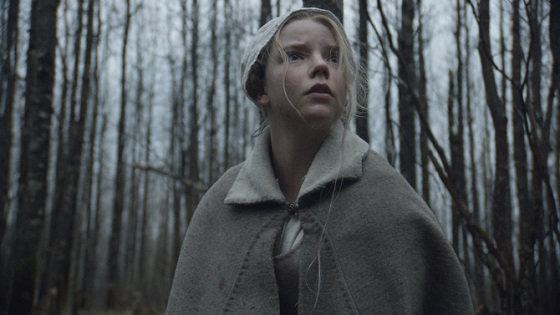
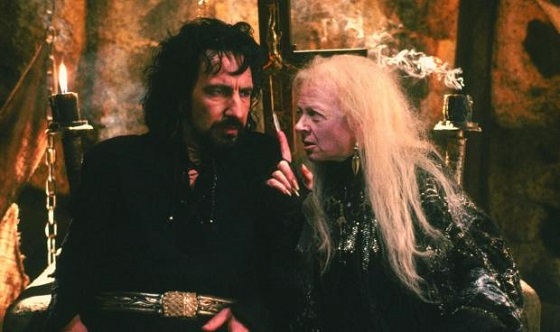
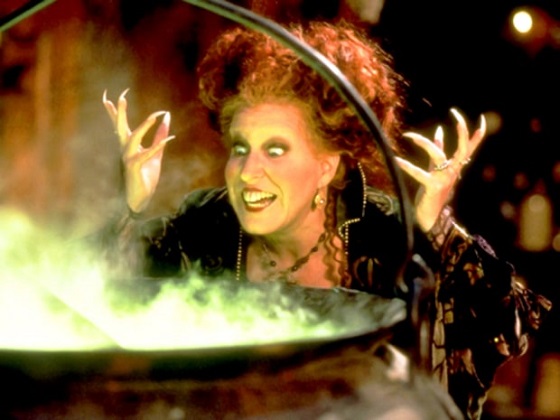
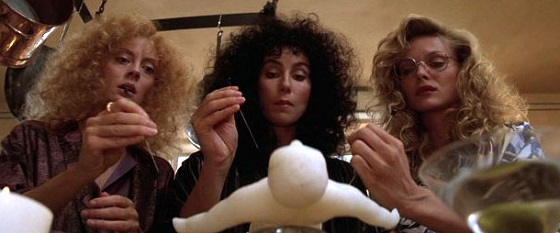
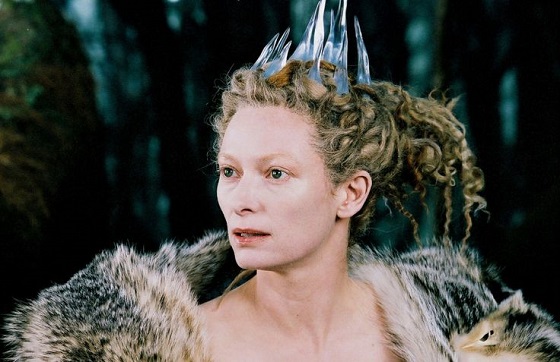
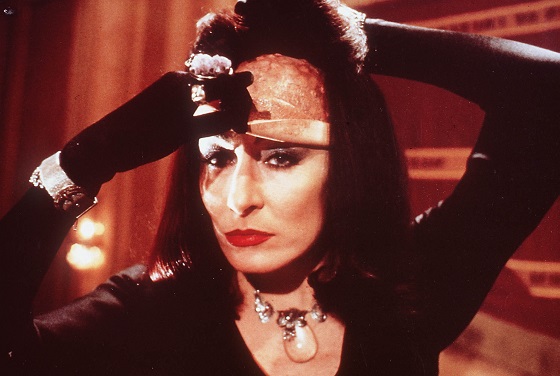
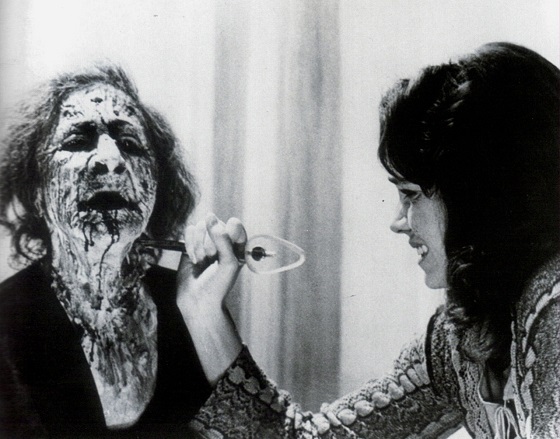
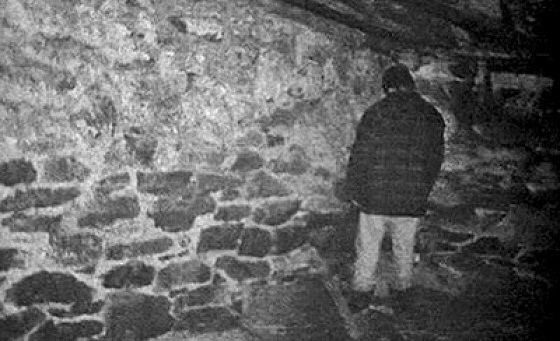
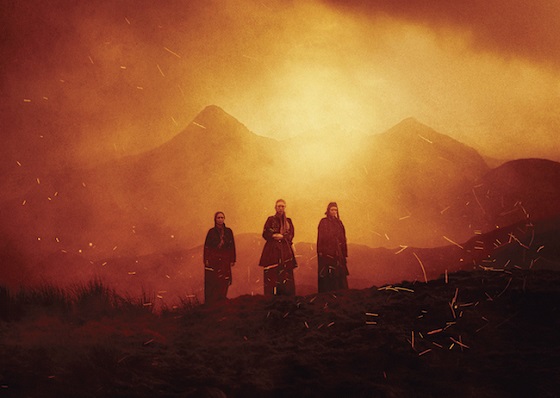
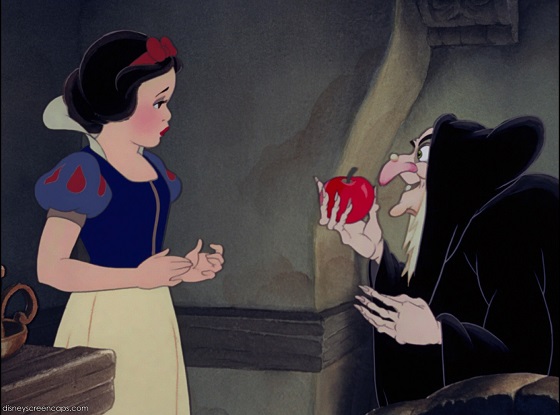
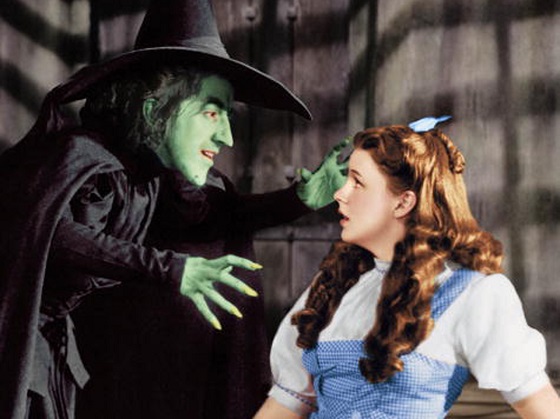

Comments on this entry are closed.